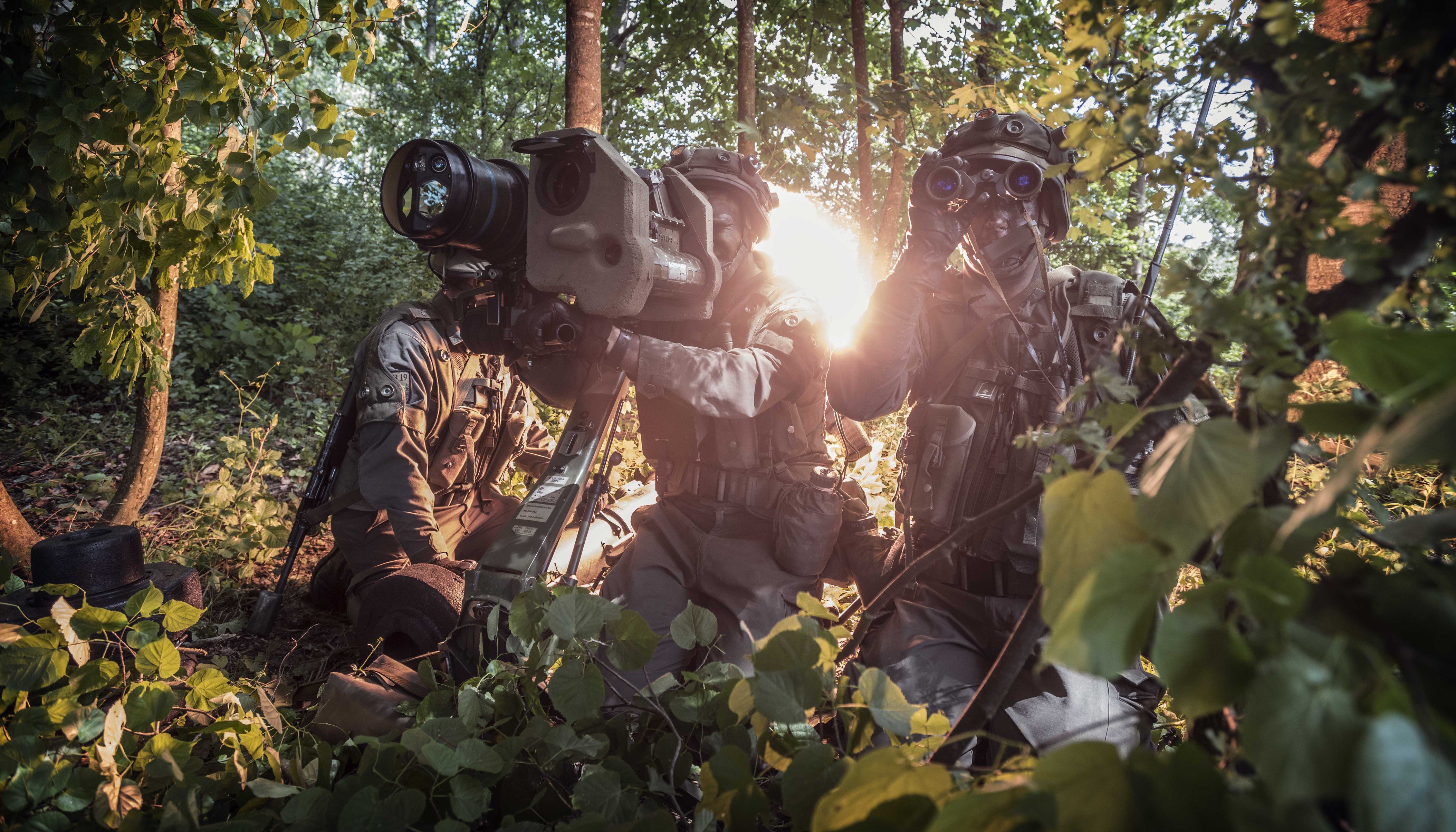BILL 1 Anti-tank guided weapon on:
[Wikipedia]
[Google]
[Amazon]
The RBS 56 BILL is a Swedish manportable
 A man portable BILL system consists of a missile in a sealed launch tube, tripod, day sight and thermal night-vision sight. The missile's
A man portable BILL system consists of a missile in a sealed launch tube, tripod, day sight and thermal night-vision sight. The missile's
SACLOS
Semi-automatic command to line of sight (SACLOS) is a method of missile command guidance. In SACLOS, the operator has to continually point a sighting device at the target while the missile is in flight. Electronics in the sighting device and/or th ...
wire-guided
A wire-guided missile is a missile that is guided by signals sent to it via thin wires connected between the missile and its guidance mechanism, which is located somewhere near the launch site. As the missile flies, the wires are reeled out behi ...
anti-tank missile
An anti-tank guided missile (ATGM), anti-tank missile, anti-tank guided weapon (ATGW) or anti-armor guided weapon is a guided missile primarily designed to hit and destroy heavily armored military vehicles. ATGMs range in size from shoulder ...
developed by AB Bofors. Development began in 1979 and entered production in 1985. The Swedish Army began receiving the missile in March 1988. BILL stands for (Bofors, Infantry, Light and Lethal). By 1996, 15,000 missiles had been produced and supplied to the Swedish and Austrian armies. Between 1996 and 1997 Brazil received a number of missiles. In the late 1990s production shifted to the RBS 56B BILL 2. The Swedish army received the first deliveries of the BILL 2 in 1999.
Description
 A man portable BILL system consists of a missile in a sealed launch tube, tripod, day sight and thermal night-vision sight. The missile's
A man portable BILL system consists of a missile in a sealed launch tube, tripod, day sight and thermal night-vision sight. The missile's shaped charge
A shaped charge is an explosive charge shaped to form an explosively formed penetrator (EFP) to focus the effect of the explosive's energy. Different types of shaped charges are used for various purposes such as cutting and forming metal, ini ...
warhead is aimed downwards at an angle of 30 degrees and is triggered by a proximity fuze as the missile passes over the intended target.
The top attack
Plunging fire is a form of indirect fire, where gunfire is fired at a trajectory to make it fall on its target from above. It is normal at the high trajectories used to attain long range, and can be used deliberately to attack a target not susce ...
warhead allows the missile to strike the thinner top armour of tanks. To enable this to work effectively the missile flies 0.75 meters above the line of sight between the launcher and the target. A secondary effect of this is to enable the missile to be used to engage targets largely behind cover, for example a hull down
In sailing and warfare, hull-down means that the upper part of a vessel or vehicle is visible, but the main, lower body (hull) is not; the term hull-up means that all of the body is visible. The terms originated with sailing and naval warfare i ...
tank.
When launched the missile is propelled from the launch tube at around 72 meters per second by a gas generator at the rear of the launch tube. Once the missile is clear of the launch tube the sustainer motor engages and accelerates the missile to a speed of 250 meters per second. Once the missile is about 400 meters from the launcher, the sustainer motor cuts out and the missile continues in free flight.
Operators
Current operators
*:Marines
Marines, or naval infantry, are typically a military force trained to operate in littoral zones in support of naval operations. Historically, tasks undertaken by marines have included helping maintain discipline and order aboard the ship (refle ...
Former operators
*: through 2010 * through 2006 * * *: Swedish army, 1985–2013References
* Anti-tank guided missiles of Sweden {{missile-stub